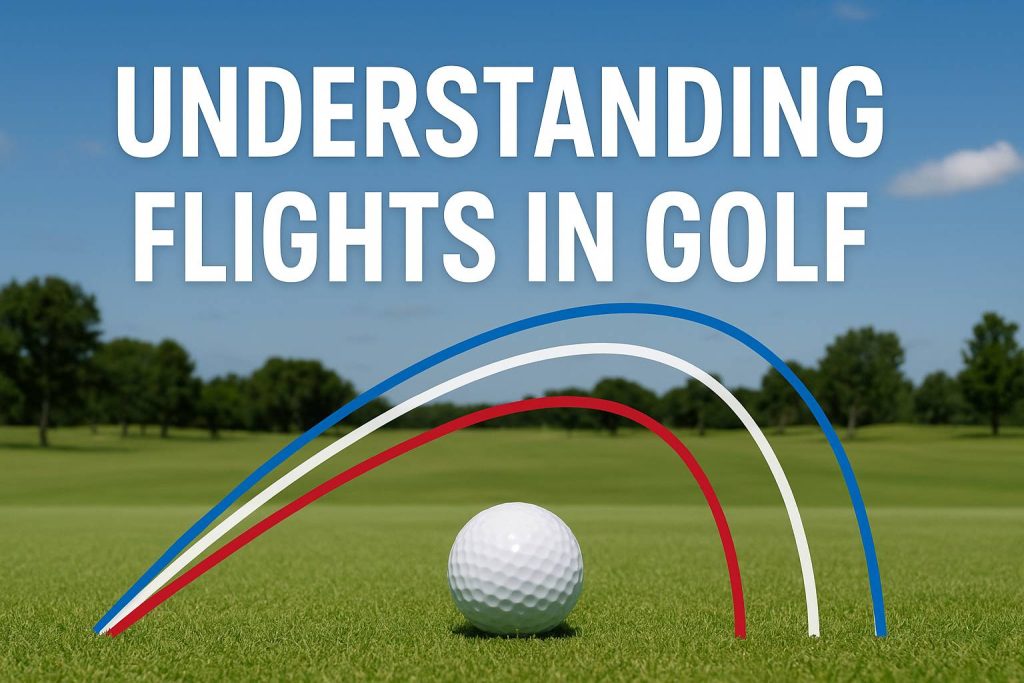In the sport of golf, there are various technical terms that may sound unfamiliar to beginners. One of the essential terms every golfer—whether amateur or professional—should know is “flight.” This term refers to the grouping of players who play together in a single round of golf. The flight system not only facilitates match management but also plays a vital role in maintaining the etiquette and efficiency of the game.
In this article by GoGolf, we will thoroughly explore the concept of flights in golf, their core functions, and the different types of flight formats commonly used in various tournaments.
What Is a Flight in Golf?
In simple terms, a flight in golf is a group of players scheduled to play together during a round on the course. Typically, one flight consists of two to four players, depending on the format of the event and the tournament organizer’s policies. The flight structure is a foundational element in golf, as it determines tee time scheduling, playing order, and even score recording procedures.
In large-scale tournaments, flight assignments are organized systematically and strategically. Organizers may consider factors such as player handicaps, membership status, skill level, and, in some cases, special requests from participants or sponsors. For example, in charity or corporate tournaments, flights may be arranged to facilitate business networking and relationship-building.
Flights also reflect the social dynamics of golf. Players within the same flight will interact for several hours during play, making it essential for organizers to ensure harmonious groupings. Therefore, effective flight pairing involves not only technical considerations but also interpersonal compatibility.

Core Functions of Flights in Golf
The use of flights in golf serves several important purposes that contribute directly to the smooth operation and fairness of a competition. Here are the primary functions of the flight system:
1. Efficient Tee Time Scheduling
Each flight has a designated tee time—a specific time when the group begins playing from the first hole. With proper scheduling, organizers can avoid overlaps between groups and reduce congestion at each hole. This is particularly crucial in tournaments involving dozens or even hundreds of players.
2. Preventing Course Congestion
Without a flight system, players might arrive and start playing at will. This could cause player buildup on certain holes, disrupting the pace of play. Flights allow for a systematic and disciplined flow of players across the course.
3. Balancing Player Skill Levels
Flights are also used to balance skill levels within each group. In tournaments that apply handicap systems, players with similar capabilities are often grouped together to ensure fair and competitive play.
4. Simplifying Scorekeeping
In golf, scoring is typically recorded by fellow players within the same flight. Hence, a well-composed flight ensures a more objective and conflict-free scorekeeping process. Some tournaments even implement scorekeeping rotations to maintain accuracy.
5. Supporting Tournament Logistics and Operations
Well-structured flights make it easier for organizers to manage supporting logistics such as golf carts, caddies, refreshments, and other technical needs. Additionally, flight data forms the basis for creating pairing sheets and digital leaderboards.
Make golf booking effortless. Install GoGolf now!
Flight Scheduling and Example Format
In practice, flight assignments are usually displayed in a table or pairing list called a flight sheet. This table contains key information such as flight number, tee-off time, starting hole, and player names. Below is a sample flight schedule:
| Flight | Tee Time | Starting Hole | Player Names |
|---|---|---|---|
| 1 | 06:30 AM | Hole 1 | Budi, Rudi, Tono, Dimas |
| 2 | 06:40 AM | Hole 1 | Sinta, Lani, Kevin, Andi |
| 3 | 06:30 AM | Hole 10 | Dede, Anwar, Hari, Yanti |
From the example above, each flight has its own start time and starting hole. In a shotgun start format, for instance, multiple flights begin from different holes simultaneously, allowing the entire round to be completed more efficiently and in unison.
Types of Flights Based on Number of Players
Flights in golf can be classified based on the number of players in the group. While there is no strict universal rule, flights are generally categorized into the following types:
1. Single (1 Player)
This flight type is rare in tournaments because solo play reduces both the competitive spirit and social interaction. Single-player flights are typically seen during practice rounds or in special circumstances like pre-tournament course testing.
2. Pairing or Two-Ball (2 Players)
This format is commonly used in match play, where two players compete head-to-head. It is also suitable for casual rounds or individual matchups during practice sessions.
3. Three-Ball (3 Players)
Flights with three players are often used in casual rounds or non-professional tournaments. This number is considered ideal—not too crowded, yet sufficient to maintain social interaction and game flow.
4. Four-Ball (4 Players)
This is the most common flight format, especially in corporate events or large tournaments using shotgun starts. In some formats like best ball or scramble, a four-player flight may form a single team, making this setup perfect for both competition and camaraderie.
Conclusion: Why Understanding Flights in Golf Is Important
A flight is more than just a technical term in the world of golf—it’s the foundation of game structure. By understanding what a flight is, how it functions, and the different grouping types, a golfer becomes more prepared to participate in tournaments, follow gameplay procedures, and respect on-course etiquette.
For tournament organizers, the flight system is a crucial management tool that ensures a smooth and optimized playing experience for all participants. For players, a flight represents both a competitive and social space that directly influences their overall golf experience.
Whether you’re a beginner, recreational golfer, or an emerging professional, understanding and respecting the flight system will enhance your game quality and deepen your appreciation for how golf is played at an organized and professional level.
[ Follow our social media Account: GoGolf Instagram | GoGolf Facebook | GoGolf X ]











